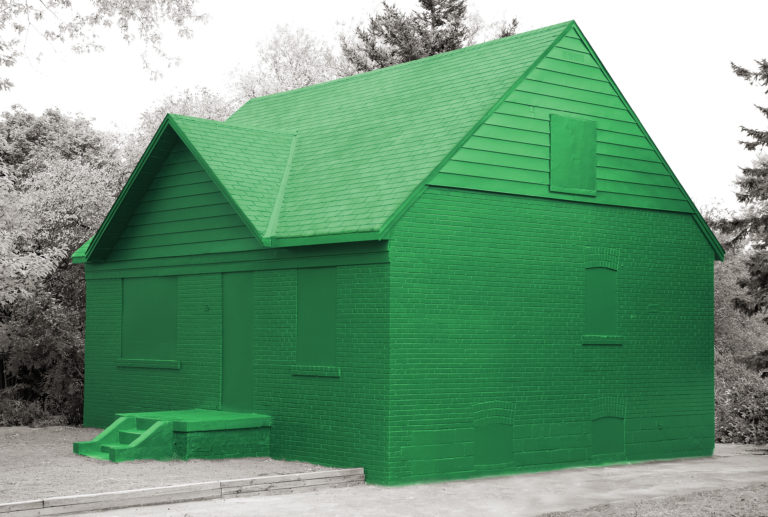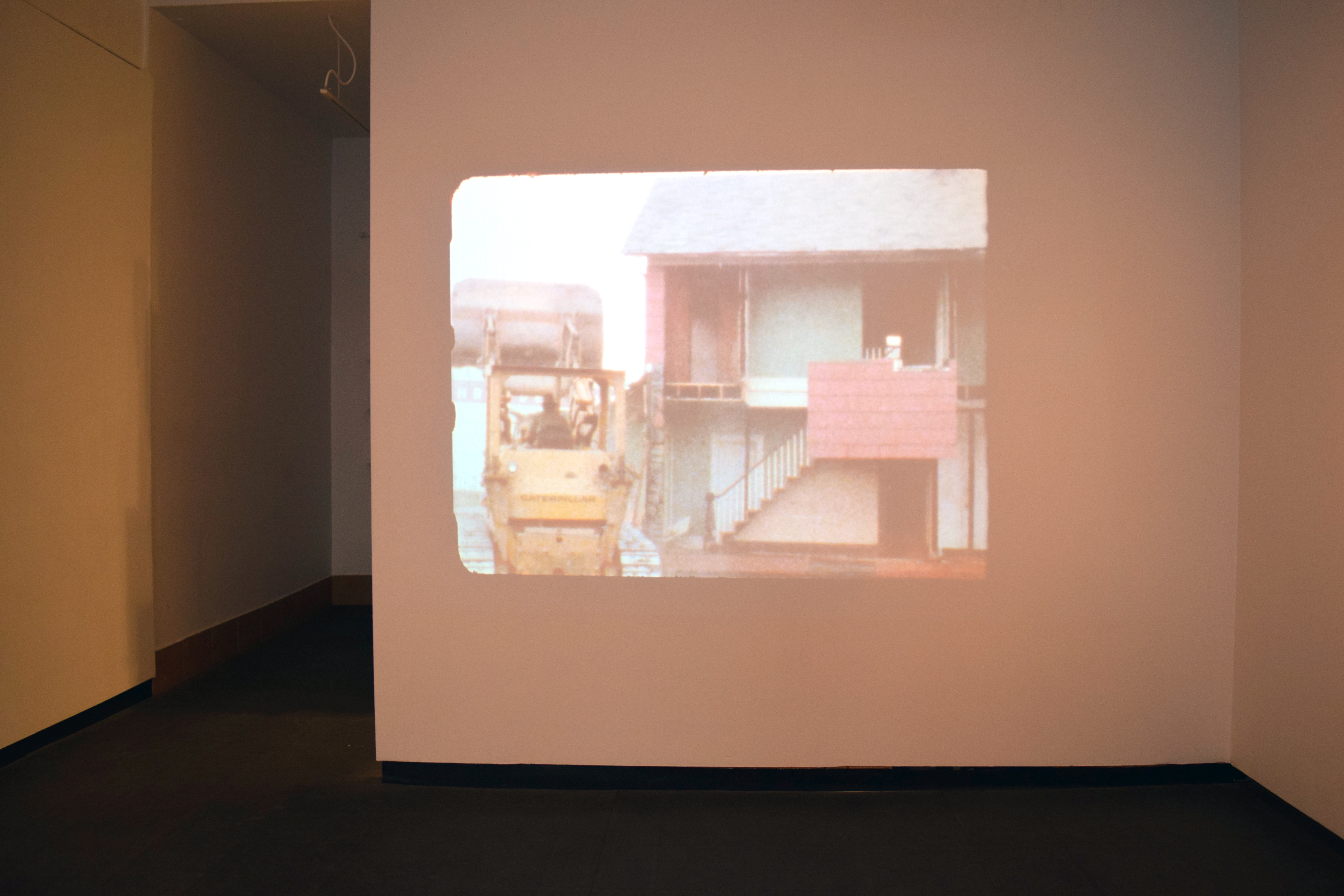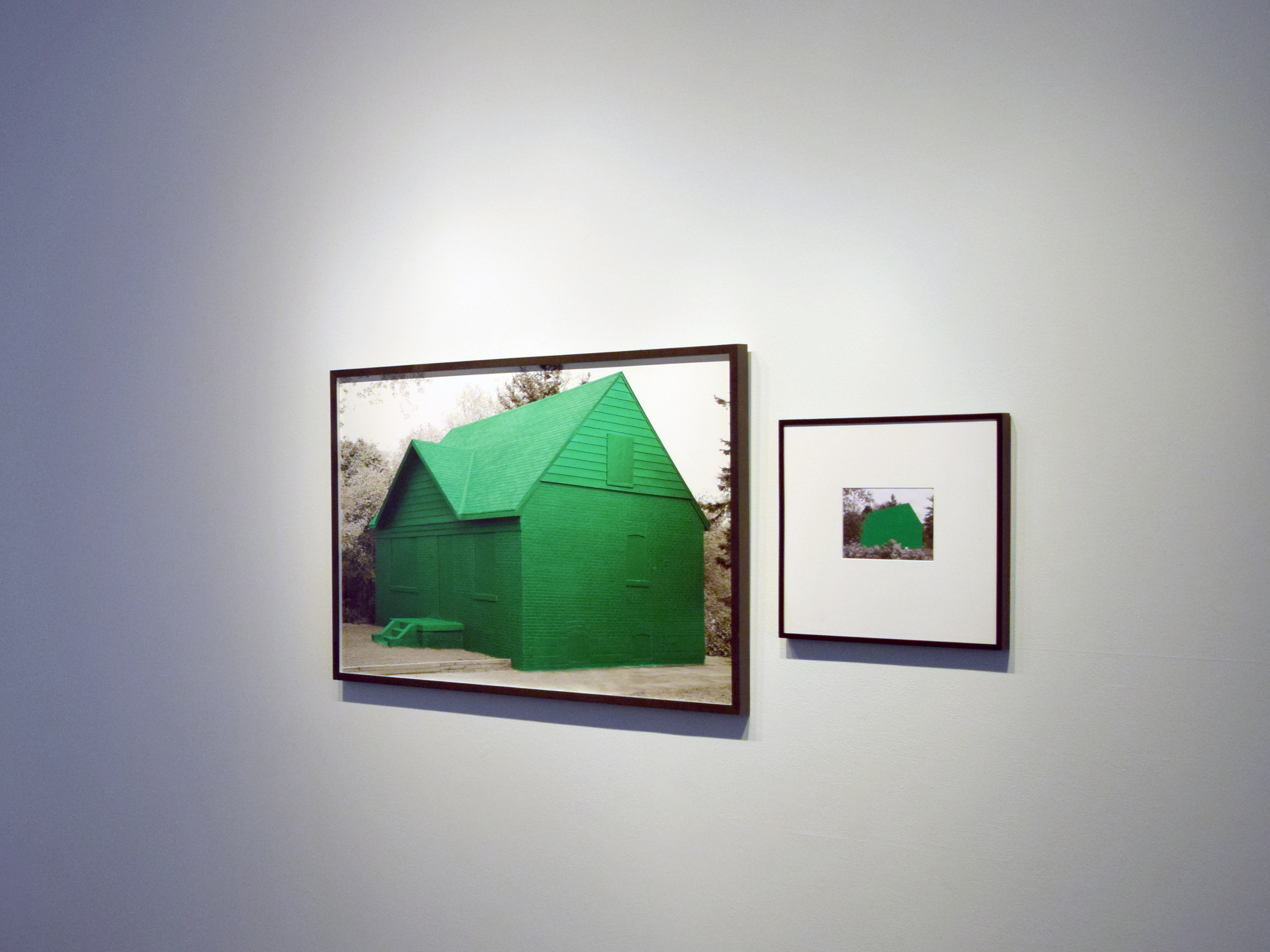MAINSPACE EXHIBITION /

Title Deed, An Te Liu, 2009
bust/boom
Richard Ibghy & Marilou Lemmens
Gabrielle L’Hirondelle Hill
An Te Liu
Gordon Matta-Clark
Hwayeon Nam
Curated by Noa Bronstein and Deborah Wang
May 25 — June 29, 2018



Exhibition Text
To date, the 2008 financial crisis is arguably one of the most significant events of the 21st century, an event that continues to impact our cultural, political, architectural, and economic landscape. bust/boom offers an attempt to make visible the complex and often immaterial ways we are affected by economic cycles. This exhibition strives to better understand both the visible and invisible conditions of our time, especially living and working within the aftershocks of “the crash.” It is therefore an investigative exploration into our own desire to continue to ask what happened and why. Given that 2018 marks the ten-year anniversary of the crash, this exhibition offers a reflection that engages perspectives before, at the time of, and after the historic event. bust/boom is also particularly timely within the specific context of The New Gallery given the highly cyclical and globally dependent economic history of Calgary as a city reliant on a single-extraction resource commodity.
bust/boom features several works that explore the abstract and tangible markers of economic cycles, as well as the very real ways that the financial crisis affects individuals, communities, and places. Offering a kind of metonymic approach, the exhibition further traces the cyclical and provisional nature of commodities and markets. Hwayeon Nam’s Botany of Desire intersperses images of the 17th century Dutch tulip mania with the stock market crash of 2008. The video combines the frantic sounds of a trading floor, broadcasts relating to recent stock market crashes, fluctuating stock market graphs, and colourful tulips deformed by viruses. By conflating the first speculative bubble (“tulip mania”) with the abstract ways contemporary markets function, Nam’s video addresses a complexity of discourses related to value and globalized economies. The work further compels an image of uncertainty, and the unpredictable character of markets and economies, which she visually relates to the volatility of natural cycles.
Following Gordon Matta-Clark’s interest in, and work with, “leftover” pieces of land and soon-to-be demolished buildings, bust/boom also looks specifically to the urban fabric as a sign of economic health. With projects such as Splitting and Conical Intersect, Matta-Clark draws our attention to the ebbs and flows of urban development by using houses as the medium for his large-scale sculptures. Engaging in acts of cutting, removal, and deconstruction, his works expose the frailty and precariousness of the building envelope. In Bingo/Ninths (the film), the house is demolished after being surgically “operated on” by the artist. We see the thinness of the house’s skin, the cheapness of materials, the way these houses are really “ticky-tacky.”
A double-edged sword, demolition signals a “boom,” whereas elsewhere, condemned houses are symptomatic of a city (or country) in decline. In An Te Liu’s Title Deed, a post-war suburban house is transformed with green paint into a colossal Monopoly piece, becoming a literal stand-in for the value accorded to its property – a pure symbol. Created in 2009 as part of a series of artist interventions on six post-war houses slated for demolition Toronto suburb, Title Deed also points to conflicting aspects of the real estate market: the wastefulness of tearing down existing houses to construct new ones, the health of Toronto’s housing market despite the crash, and the persistence of insatiable development practices.
Economic crises also have linguistic implications. Very specific vocabulary adopted during periods of financial upheaval with terms such as boom/bust, crash/recovery, and rise/fall becomes common parlance and a shorthand for complex systems. Richard Ibghy and Marilou Lemmens’s Sesame Street Economics helps us focus on the language used to describe the economy (and other opaque systems), and the kind of assumptions and expectations these specific semantic indicators compel. The video presents a sequence of 486 economic terms alternating from mundane and easily recognizable concepts to advanced technical jargon pulled from specialized journals and policy documents. The playful colours and voice-over of the video, reminiscent of an educational game on the television show Sesame Street, creates a tension between the weight of the language being used and the seemingly impartial way it is presented. In this way, the project calls attention to the apparent neutrality of these terms versus the ideological authority they have on larger systems of political and economic power.
Countering Western ideas of economies of scale, exchange, and commodity, Gabrielle L’Hirondelle Hill’s sculptures and photographs show concern for, and bring attention to, interstitial zones of land that are often former sites of industry. For example, a tract of land beneath the Georgia Street Viaduct in Vancouver, a place formative to the artist in her youth that she warmly calls “the Wastelands.” As Hill notes, these in-between spaces have become gathering places for different kinds of publics who often remain excluded from “official” public spaces. They are publics who have fostered alternative economies, including bottle and scrap metal recycling, and inhabited the land of the discarded rail yard. Sculptures are made from materials salvaged from this area, and paired with images that document Hill’s interventions in the landscape. The result is a series of works that reflect on the various ways that this track of land has been a place of activity during periods of Indigenous, colonial, industrial, and neoliberal use. Resisting the aesthetics of poverty, Hill suggests that alternative economies are not necessarily a response to economic decline, but have long been part of pre-capitalist societies and a critical means by which to, as she says, “resist anti-human economic systems.” [1]
Taken as a whole, bust/boom considers the ways in which the economy impacts on our social, political, and urban conditions, while looking at, and asking how, financial systems interface with other systems.
—
[1] Curators’ call with the artist, 2017.
Biographies
Noa Bronstein is a curator and writer based in Toronto. She has contributed to such publications as PREFIX Photo, Canadian Art, Border Crossings, The Journal of Curatorial Studies, and C Magazine. Noa has held several roles in the arts, including acting as Director of Public Programs and Acting Curator at the Design Exchange, and Executive Director at Gallery 44 Centre for Contemporary Photography. She is currently the Senior Curator of Museums Mississauga.
Based in Toronto, Deborah Wang is an independent curator and designer with a background in art and architecture. Through her diverse practice, Deborah has curated and co-curated exhibitions for the Textile Museum of Canada, Gladstone Hotel, XPACE Cultural Centre, Art Gallery of Ontario, and Women’s College Hospital. Currently, she splits her time as Artistic Director of the Toronto Design Offsite Festival, and as a senior designer for superkül.
bust/boom is the third curatorial collaboration of Noa and Deborah.
Richard Ibghy & Marilou Lemmens: Based in Durham-Sud, Canada, Richard Ibghy & Marilou Lemmens have developed a collaborative practice that spans across multiple media, including video, performance and installation. Their work explores the material, affective and sensory dimensions of experience that cannot be fully translated into signs or systems. For several years, they have examined the rationale upon which economic actions are described and represented, and how the logic of economy has come to infiltrate the most intimate aspects of life.
Most recently, their work was presented in solo exhibitions at the Agnes Etherington Art Centre, Kingston (2017), Jane Lombard Gallery, New York (2017), Owens Art Gallery, Sackville, Canada (2017), Louise and Reuben Cohen Art Gallery, Moncton (2017) the International Studio & Curatorial Program, New York (2016), YYZ Artists’ Outlet, Toronto (2016), Esker Foundation Contemporary Art Gallery, Calgary (2016), Leonard & Bina Ellen Art Gallery, Montreal (2016), VOX – Centre de l’image contemporaine, Montreal (2014), Trinity Square Video, Toronto (2014), Monte Vista Projects, Los Angeles (2012) and G Gallery, Toronto (2012).
They have participated in a number of group exhibitions including the 2nd OFF-Biennale, Budapest (2017), Morris and Helen Belkin Art Gallery, Vancouver (2017), XIII Bienal de Cuenca, Cuenca, Ecuador (2016), Blackwood Gallery, Mississauga (2016), Art Gallery of Guelph, Guelph (2016), Postmasters Gallery, New York (2016), 14th Istanbul Biennial (2015), La Biennale de Montréal (2014), Manif d’art 7: Quebec City Biennial (2014), Herbert Read Gallery, Canterbury (2014), La Filature, Scene Nationale and La Kunsthalle, Mulhouse (2013), Henie Onstad Kunstsenter, Høvikodden, Norway (2013), Centre for Contemporary Arts, Glasgow (2012) and 10th Sharjah Biennial (2011).
Gordon Matta-Clark’s thoroughly unique artistic project was a radical investigation of architecture, deconstruction, space, and urban environments. Dating from 1971 to 1977, his most prolific and vital period, his film and video works include documents of major pieces in New York, Paris and Antwerp, and are focused on three areas: performances and recycling pieces; space and texture works; and his building cuts.
Gabrielle L’Hirondelle Hill is a Metis artist and writer from Vancouver, BC, located on unceded Musqueam, Skwxwú7mesh, and Tsleil-Waututh territory. Gabrielle’s sculptures and installations perform as both an exploration of materials and an enquiry into concepts of land, property, and economy. Her work has been exhibited at the Polygon Gallery, Morris and Helen Belkin Gallery, Sunset Terrace, and Gallery Gachet in Vancouver; SBC galerie d'art contemporain in Montreal; SOMArts in San Francisco; and Get This! in Atlanta, Georgia.
An Te Liu was born in Taiwan and educated in Toronto and Los Angeles. His works are included in the permanent collections of The National Gallery of Canada, The Art Gallery of Ontario, The San Francisco Museum of Modern Art, and The Art Institute of Chicago. Recent and current group exhibitions include Art Souterrain in Montreal; Sticky Fingers at Arsenal Contemporary, New York; Aeroports: Ville-Monde at the Gaité Lyrique, Paris; Imago Mundi at the Palazzo Loredan, Venice; and The Preservationists at Duddells, Hong Kong. His most recent solo exhibition, Transmission, at Anat Ebgi, Los Angeles, was the subject of essays and reviews in Artforum, Art Papers, Art Review, Art Asia Pacific, and the LA Times.
Hwayeon Nam has been expanding her artistic practice through various media including video, installation, performance, based upon her continuous research about performativity activated by intersecting relationship between time and space. Recent exhibitions include Solo exhibition Time Mechanics (Arko Art Center, Seoul, 2015) and Wellknown Unknown (Kukje Gallery, 2016), The Decisive Moments (Arko Arts Archive, Seoul, 2014), Nouvelles Vagues (Palais de Tokyo, 2013). She was one of the finalists of Hermès Foundation Missulsang 2009, and participated in the 56th Venice Biennale with The Botany of Desire. Nam also made performances including Dimensions Variable (Festival Bo:m, 2013), A Garden in Italy (Festival Bo:m, 2012).

